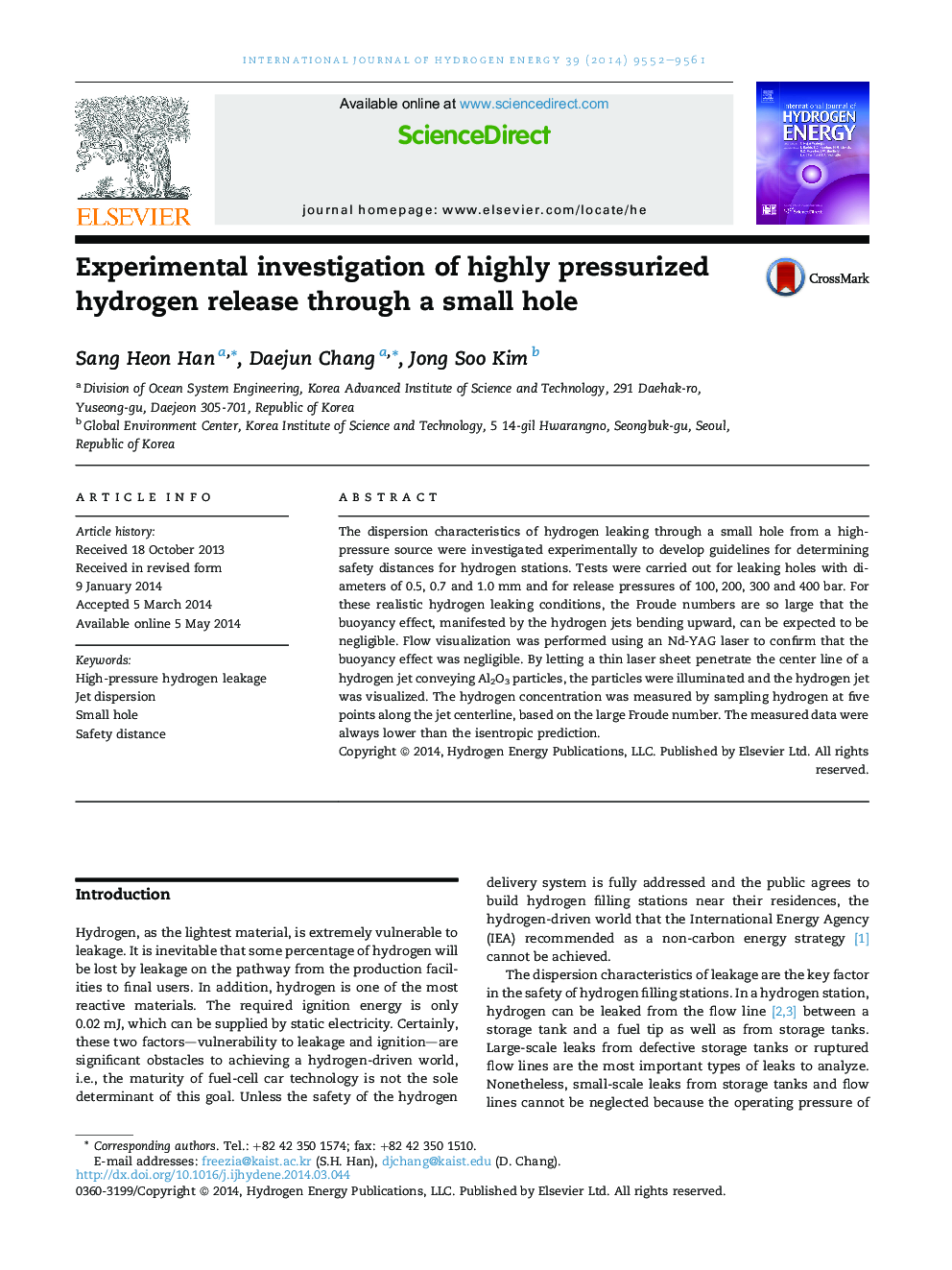| Article ID | Journal | Published Year | Pages | File Type |
|---|---|---|---|---|
| 7719261 | International Journal of Hydrogen Energy | 2014 | 10 Pages |
Abstract
The dispersion characteristics of hydrogen leaking through a small hole from a high-pressure source were investigated experimentally to develop guidelines for determining safety distances for hydrogen stations. Tests were carried out for leaking holes with diameters of 0.5, 0.7 and 1.0Â mm and for release pressures of 100, 200, 300 and 400Â bar. For these realistic hydrogen leaking conditions, the Froude numbers are so large that the buoyancy effect, manifested by the hydrogen jets bending upward, can be expected to be negligible. Flow visualization was performed using an Nd-YAG laser to confirm that the buoyancy effect was negligible. By letting a thin laser sheet penetrate the center line of a hydrogen jet conveying Al2O3 particles, the particles were illuminated and the hydrogen jet was visualized. The hydrogen concentration was measured by sampling hydrogen at five points along the jet centerline, based on the large Froude number. The measured data were always lower than the isentropic prediction.
Related Topics
Physical Sciences and Engineering
Chemistry
Electrochemistry
Authors
Sang Heon Han, Daejun Chang, Jong Soo Kim,
